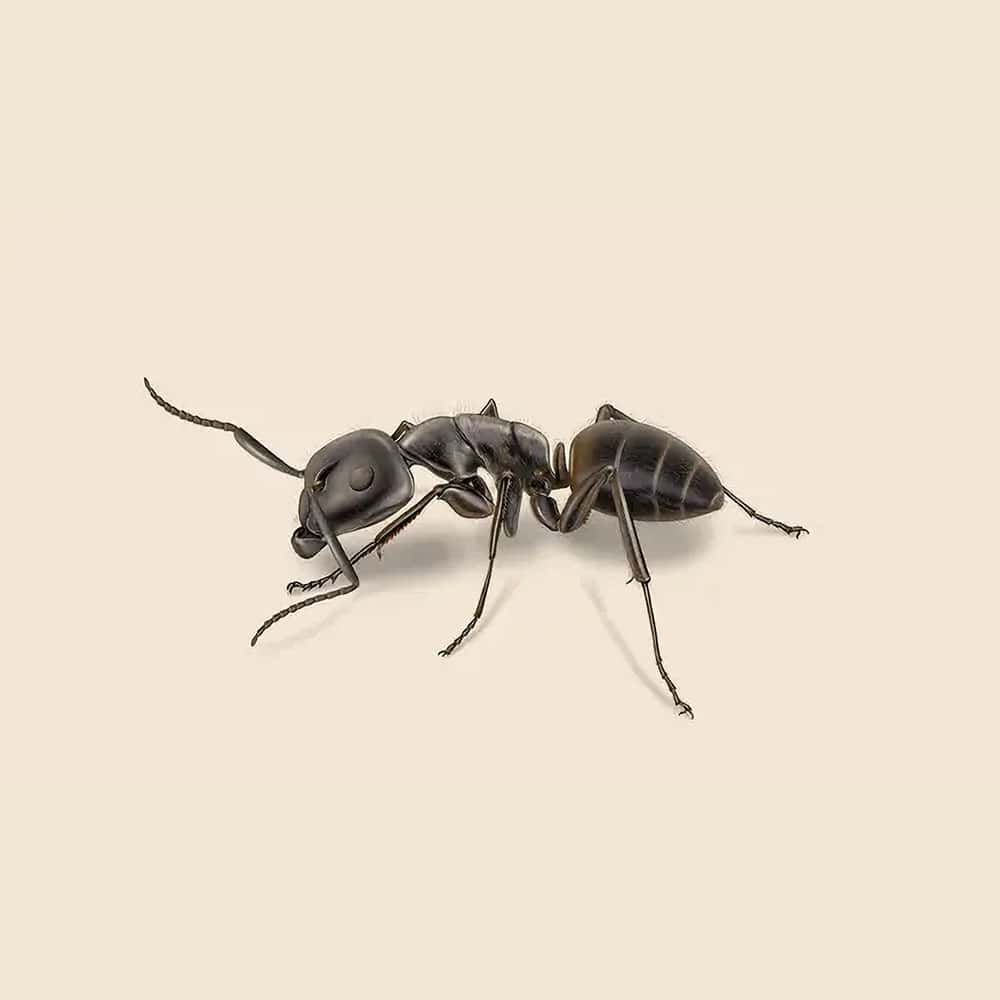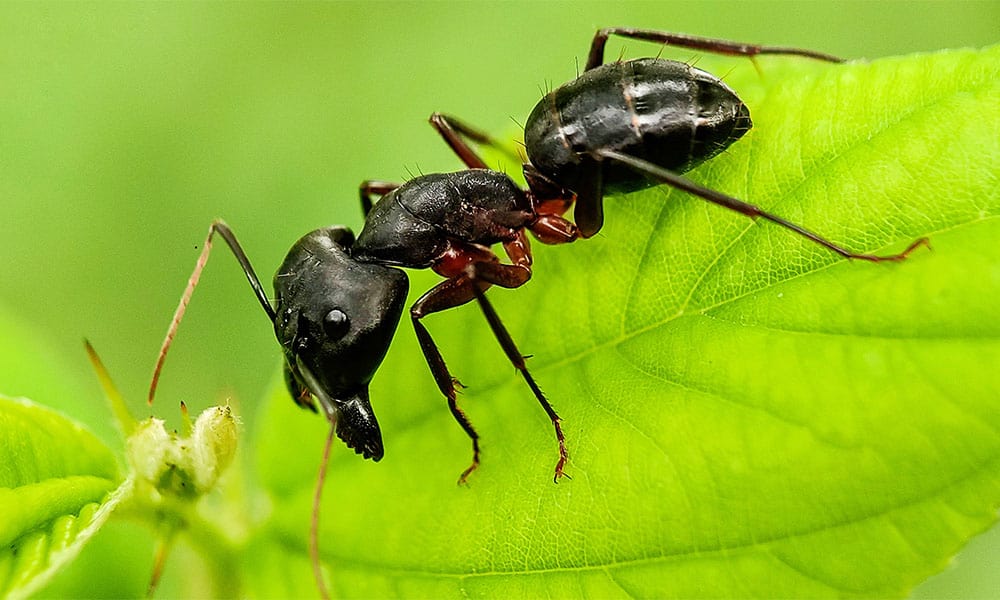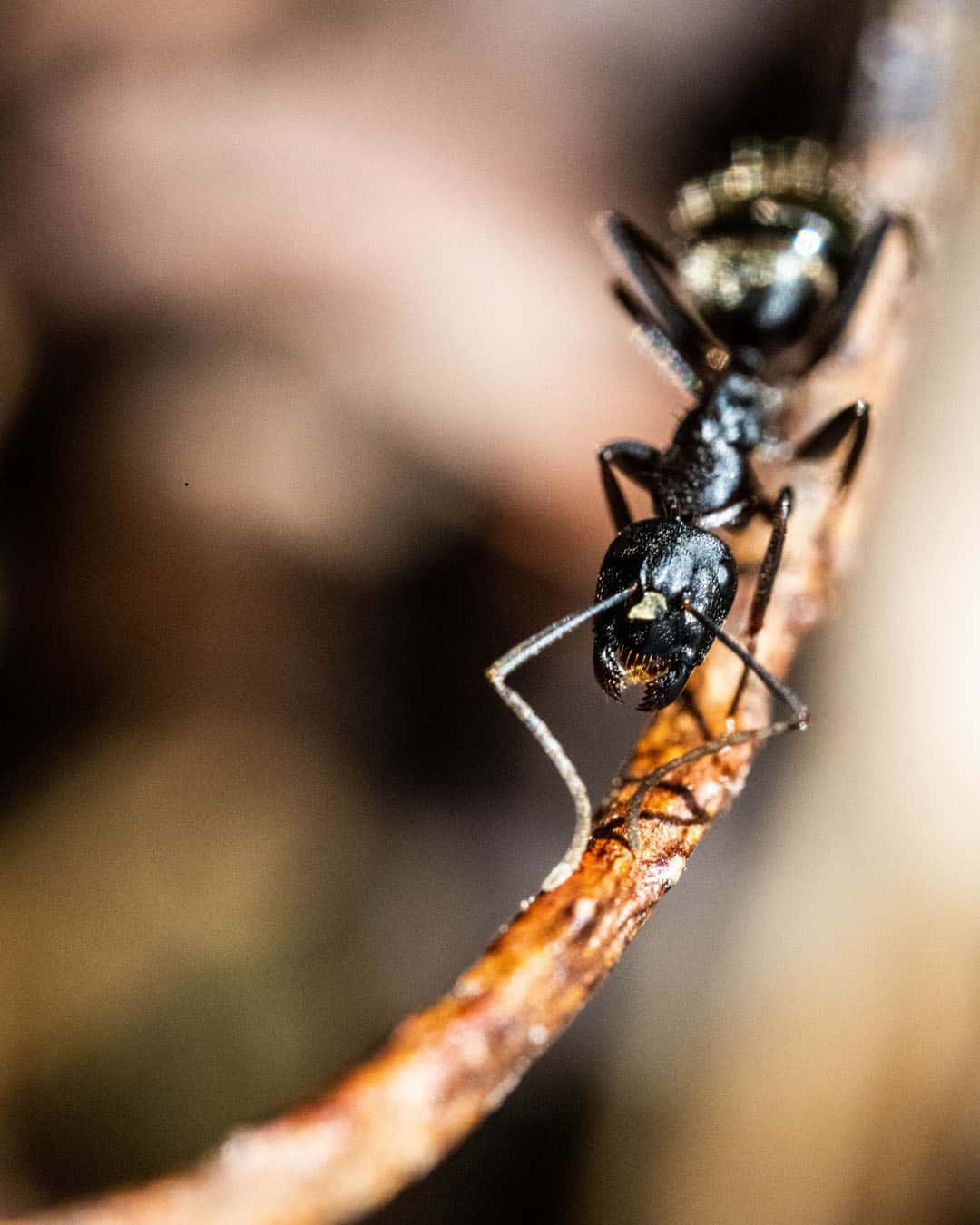Carpenter Ant Facts & Information
Carpenter ants, known for their ability to excavate wood to create nesting galleries, are a common nuisance for homeowners. While they do not consume wood like termites, their nesting habits can cause significant structural damage to buildings if left unchecked.

Camponotus Spp
What You Need To Know About Carpenter Ants
What do carpenter ants look like?
Carpenter ants are large ants, typically measuring between 1/4 to 1/2 inch in length. They are usually black, but some species can be red, brown, or a combination of colors. They have a distinctively narrow waist and elbowed antennae.
What do carpenter ants eat?
Carpenter ants feed on a variety of food sources, including sweets, proteins, and other insects. They do not eat wood; instead, they tunnel through it to create nests, preferring damp or decayed wood.
What sort of habitat do carpenter ants live in?
Carpenter ants are commonly found in wooded areas, nesting in dead or decaying trees, logs, and stumps. In homes, they often nest in wood structures, especially where there is moisture damage, such as in walls, floors, and roofs.
How do carpenter ants commonly behave?
Carpenter ants are mostly nocturnal and forage at night, traveling in trails to and from their nests. They create smooth, clean galleries in wood, which are often mistaken for termite damage. Unlike termites, carpenter ants do not consume wood but remove it to expand their nests.
Did you know this about carpenter ants?
Carpenter ants can cause significant structural damage if left unchecked, as they can hollow out large sections of wood to create their nests. Interestingly, they can travel considerable distances in search of food and water, often leading to satellite nests that support the main colony. Carpenter ants are also known for their ability to establish multiple nesting sites, which makes controlling them more challenging.
Understanding Carpenter Ant Infestations
Understanding carpenter ant infestations is crucial for effective management. Carpenter ants build their nests by hollowing out wood, which can lead to significant damage over time. They are often found in decaying wood or moisture-damaged areas, but they can also infest sound wood. Carpenter ants can be challenging to control due to their nesting habits and the potential for multiple satellite colonies.

How Hearts Handles Carpenter Ant Treatment
Hearts Pest Management employs an integrated pest management approach to handle Carpenter Ant infestations.
Carpenter Ants Inspection
Carpenter Ants Treatment
Carpenter Ants Prevention
Educational Resources

Think You Might Have a Carpenter Ant Infestation?
At Hearts Pest Control, we understand the challenges associated with Carpenter Ant infestations and are here to provide professional solutions tailored to your needs. Flourishing in warm and humid climates, they are prevalent in many regions, including San Diego County, Orange County, and Los Angeles County.